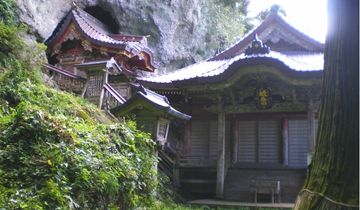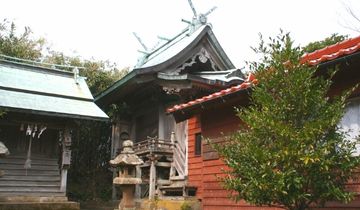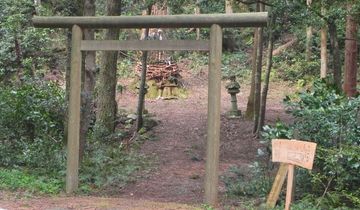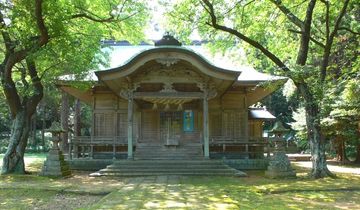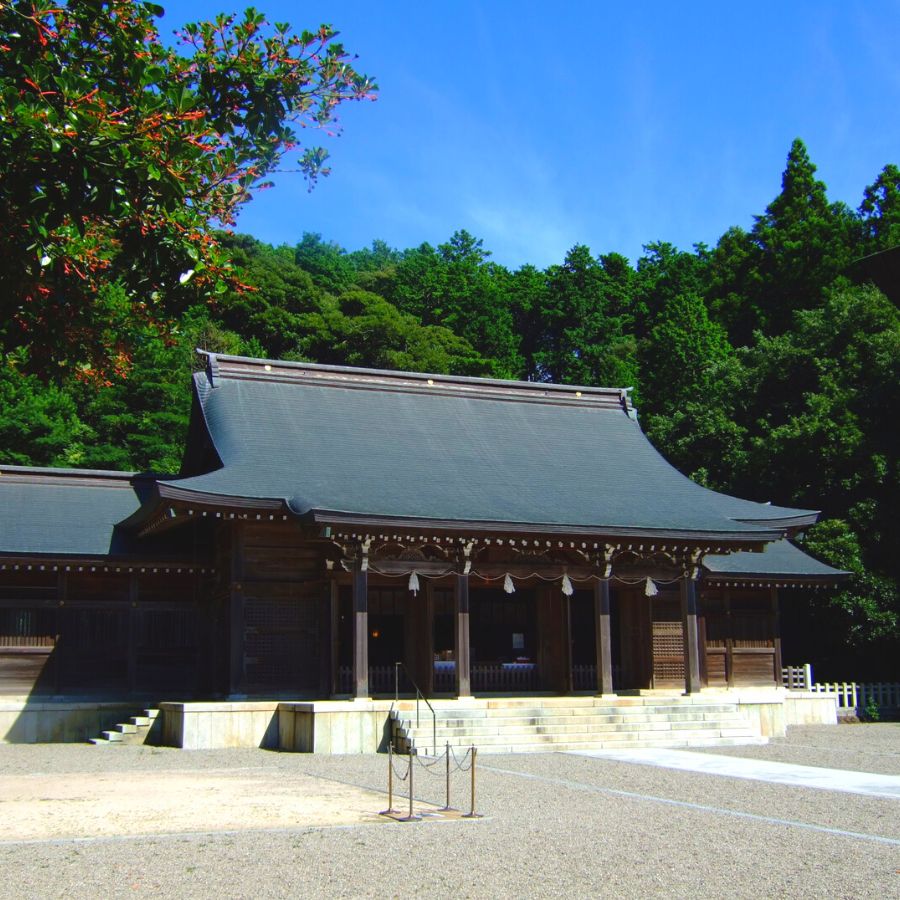
Lifestyles and Traditions - Shrines
In 1221, the retired Emperor Go-Toba was exiled to the Oki Islands due to the Jōkyū Disturbance. It is said that he lodged at Genpuku-ji Temple, and a former official of the local government with the family name Murakami, who was also the official in charge of official documents and farmland of the Ama District, served as the guard and watchman of the exiled emperor. Nineteen years later in 1239, on the 22nd day of the second month of the lunar calendar, the exiled emperor passed away and was cremated three days later on the mountain behind Genpuku-ji Temple. His ashes were buried and a cremation mound was built. In 1658, Matsudaira Naomasa, the lord of the Matsue Domain, built a mausoleum and tried to maintain it until the Meiji era (1868–1912), but Genpuku-ji Temple was temporarily closed in 1689 due to the effects of the anti-Buddhist movement.
On a map, created in the late-Edo period (1603–1867) and owned by the Emperor Go-Toba Museum in Ama Town, "Go-Toba Shrine" is shown at the site of the cremation mound; and it is said that rituals were held here by the locals in the late-Edo Period. However, in 1873, the spirit of the retired emperor was transferred to Minase Shrine in Shimamoto-cho, Mishima-gun, Osaka, and later in 1874, Go-Toba Shrine was also removed. It is said that the rituals continued even after that, and later, the grounds of the former Genpuku-ji Temple (which forms the center of this shrine) was designated as the burial site of Emperor Go-Toba in the Oki Islands.
In 1940, as one of the commemorative events for the 2600th anniversary of the foundation of Japan, the construction of Oki Shrine by Shimane Prefecture began and it was completed in 1939. In 1943, Oki Shrine was listed as a prefectural shrine, and in 1939, the 700th Anniversary Festival of Emperor Go-Toba was held to commemorate the 700th anniversary of the passing of the retired emperor.


